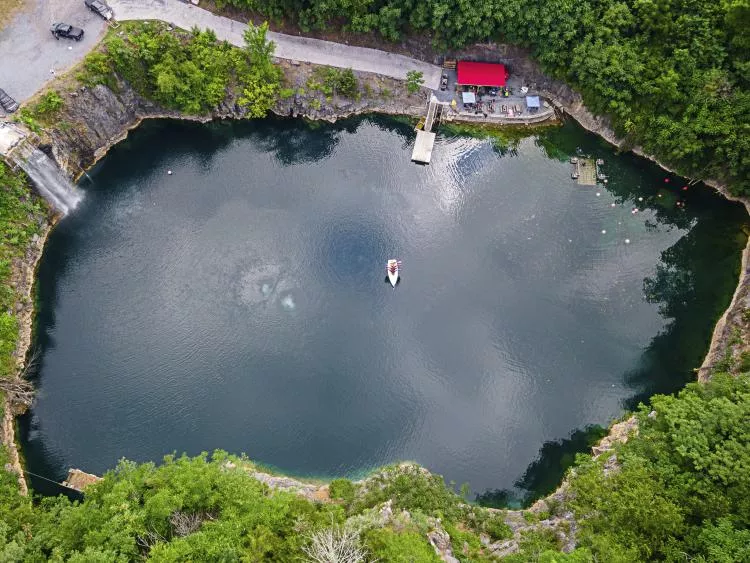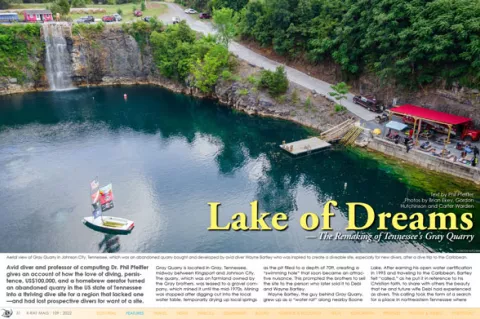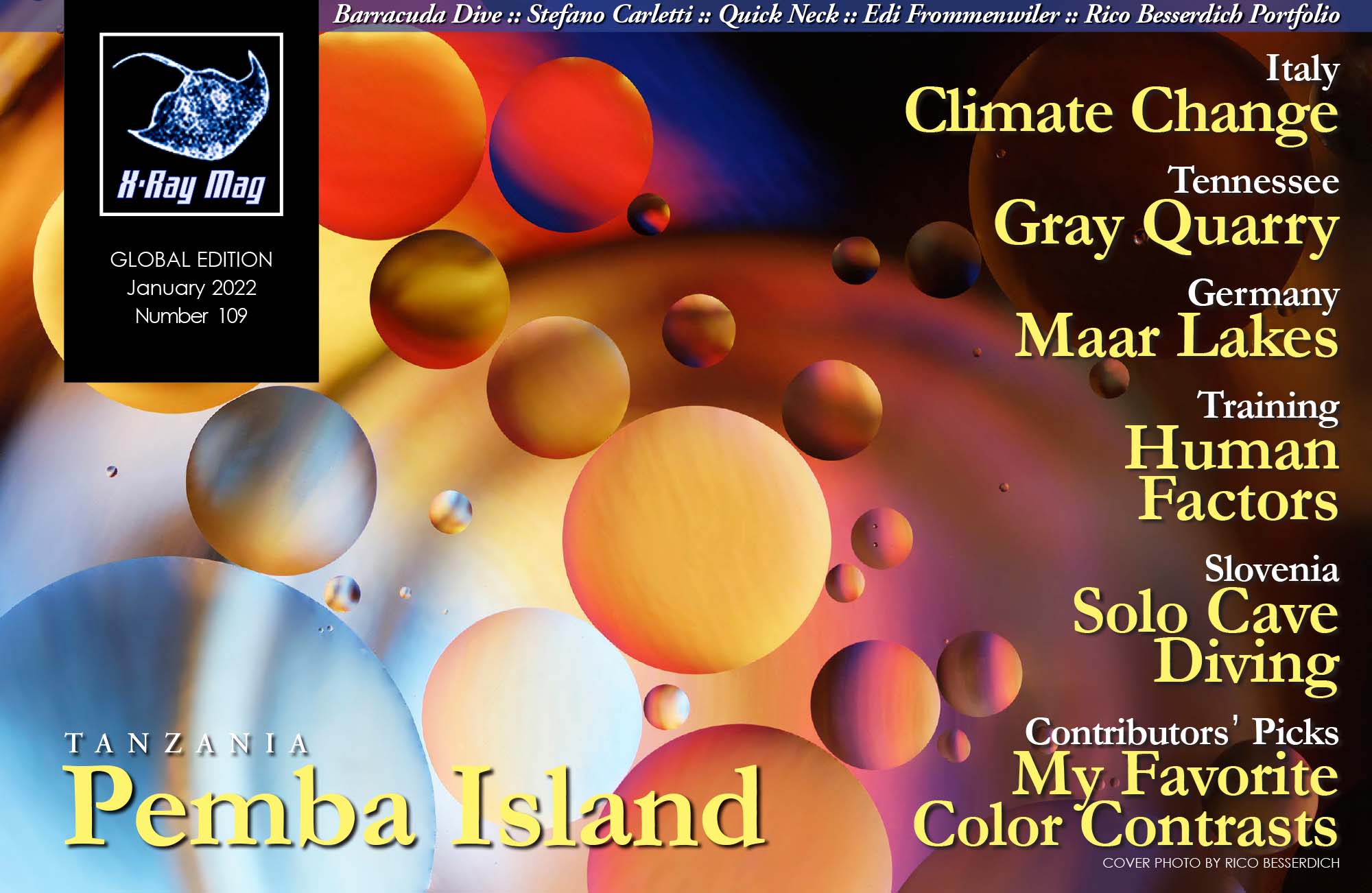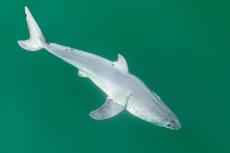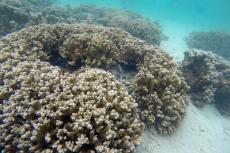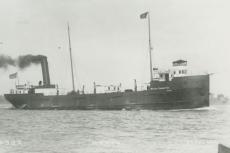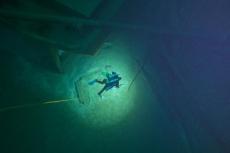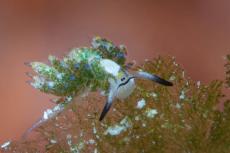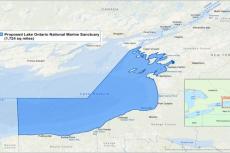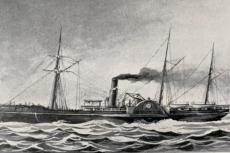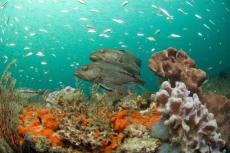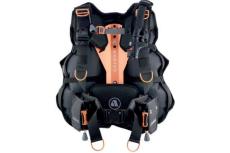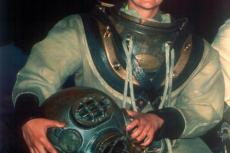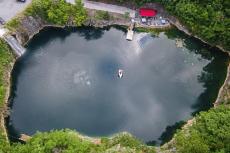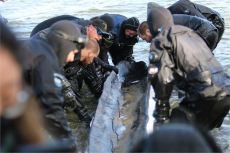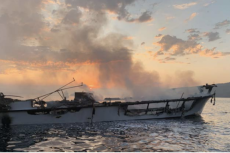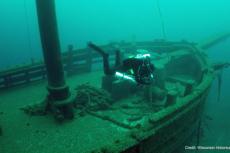Avid diver and professor of computing Dr. Phil Pfeiffer gives an account of how the love of diving, persistence, US$100,000, and a homebrew aerator turned an abandoned quarry in the US state of Tennessee into a thriving dive site for a region that lacked one—and had lost prospective divers for want of a site.
Contributed by
Gray Quarry is located in Gray, Tennessee, midway between Kingsport and Johnson City. The quarry, which was on farmland owned by the Gray brothers, was leased to a gravel company, which mined it until the mid-1970s. Mining was stopped after digging cut into the local water table, temporarily drying up local springs as the pit filled to a depth of 70ft, creating a “swimming hole” that soon became an attractive nuisance. This prompted the brothers to sell the site to the person who later sold it to Debi and Wayne Bartley.
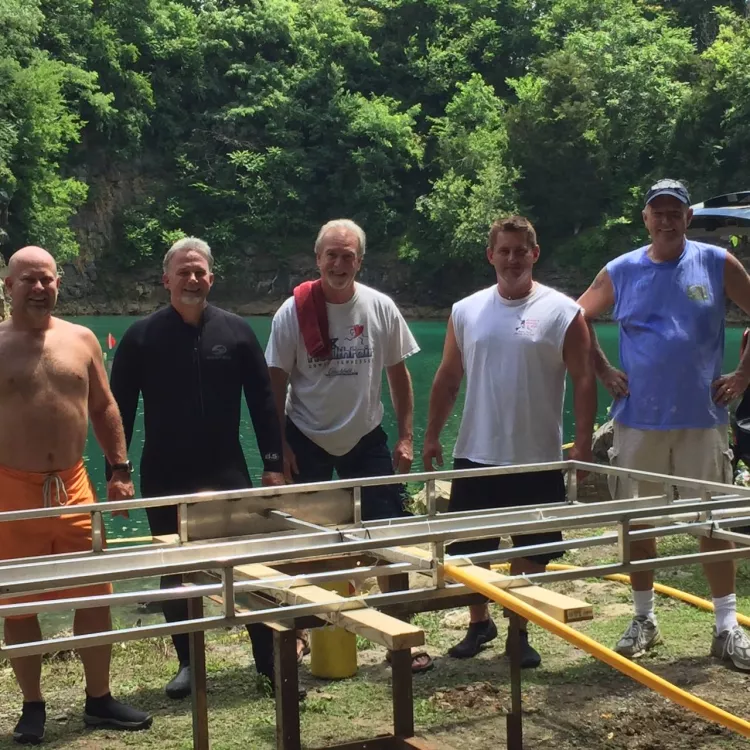
Wayne Bartley, the guy behind Gray Quarry, grew up as a “water rat” along nearby Boone Lake. After earning his open water certification in 1995 and traveling to the Caribbean, Bartley felt “called,” as he put it in reference to his Christian faith, to share with others the beauty that he and future wife Debi had experienced as divers. This calling took the form of a search for a place in northeastern Tennessee where people—particularly young people—could learn to dive.
At the time when Bartley began his search, northeastern Tennessee had no good sites where novices could train. Driving the 150+ miles to the closest training sites—former quarries south of Knoxville, Tennessee—was an inconvenience that prospective divers either would not or could not manage. One long-time area instructor, Barry Burton of Smoky Mountain Divers, estimated that fewer than a sixth of his students at the time, most of whom were students at nearby East Tennessee State University (ETSU), never obtained C-cards, due to this lack of a local site for practice and checkout dives.
Bartley’s search eventually led to Gray Quarry. With the help of area shopkeepers, Bartley befriended the quarry’s owner, who was using it as a private dive site.
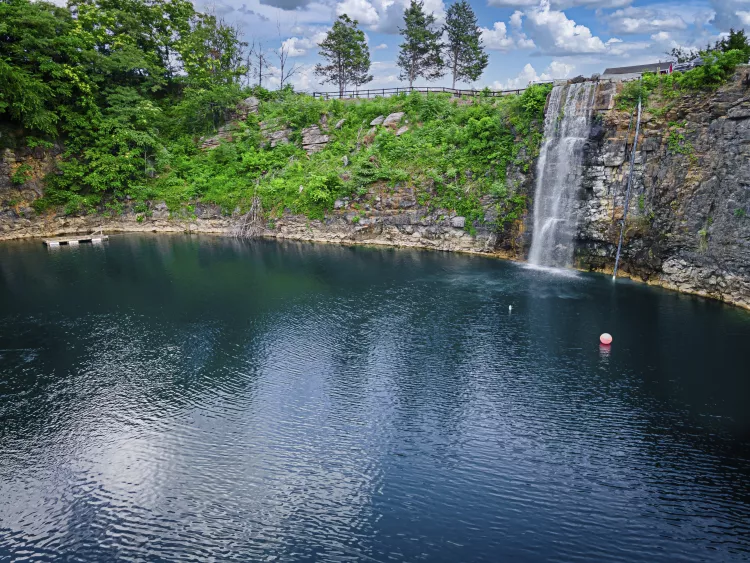
In 2014, Bartley acquired ownership of the property’s 450ft by 250ft lakelet and its surrounding property. For the next three years, Bartley worked to render the quarry diveable and accessible.
Gray Quarry is a rocky basin whose walls range in height from a low of 50ft, where an access road drops down a hill to the water, to 130ft, where the quarry’s “sign”—a high-wing aircraft that hangs from the top of the cliff—is visible from I-26. This bowl-like depression reduced the lakelet’s exposure to wind, creating a persistent thermocline at 20ft. Below this thermocline, Bartley’s quarry was an anoxic, lifeless body of 50°F water, with two feet of visibility and a bottom that was coated with a black, oily sludge of partially decayed organic matter.
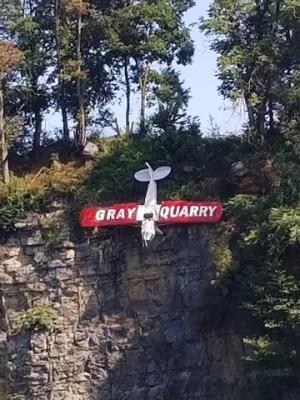
Photo by Carter Warden
Bartley’s first idea for improving the basin was to break up the sludge, using “large hockey-puck-like” pellets that a Kentucky firm had used to purify water in third-world countries. Experiments with the pellets subsequently failed, due to their need for heat and oxygen, both of which were lacking at depth.
Bartley then tried to buy a commercial aeration system that would—in effect—turn the site into a giant fish tank. The idea was to sink the aerator to the quarry’s deepest point, where it would generate bubbles that would expand and burst as they surfaced. This would cycle the water in the basin and provide oxygen for fish. The system, however, would have to deliver air at depths of 70 to 75ft—more than twice the depth at which the most powerful commercial systems, designed for use in farm ponds and fish farms, could operate. More discouraging news came from a biologist, who said that the system would probably not provide enough oxygen for fish to survive at depth.
Unknown territory
Eventually, Bartley abandoned his search for known solutions and struck out into the unknown. Over the next two years, he contracted with local utilities to get power to the quarry. Bartley obtained a 7.5-hp compressor, capable of pumping 40 pounds of air per minute, installing it in a pod on the quarry’s southeastern plateau. He obtained a heavy duty, 300ft hose that could withstand the compressor’s flow of heated, compressed air, then ran the hose over the cliffs and into the water. Bartley contracted with an awning company for a 24ft long aluminum platform, on which he installed a network of PVC pipes and diffusors, with valving to adjust for irregularities in air flow created by the quarry’s uneven bottom.
Gray Quarry. Photo by Carter Warden
Bartley correctly surmised that this assembly could withstand the heat from the compressed air; the water in the quarry proved cold enough to cool the PVC pipes, preventing them from melting.
In the spring of 2017, with a 750-lb lift bag and help from four volunteers, Bartley sank the aerator. Thereafter, the five divers emerged from the quarry’s darkest depths, geared down, returned to the parking lot, started the compressor, and waited. After some minutes, bubbles broke the surface, directly above the aerator. The crew then departed, leaving the compressor running.
After two weeks of continuous aeration, the thermocline started to dissipate. Visibility improved. Within four weeks, fish had moved down into the quarry’s lower reaches. Some weeks later, in the summer of 2017, Gray Quarry opened to the public for diving.
Further development
Over time, multiple volunteers have contributed to making Gray Quarry a more welcoming and interesting site. One early improvement, a 30ft by 70ft staging area at the base of the access road, was created from 500 tons of shale, piled behind a partially submerged concrete retaining wall and topped with gravel. The road from the parking lot to the staging area, which was originally gravel, was covered in concrete in 2020.
Currently, the area holds:
- a long, wooden gear table, which separates the access road from the staging area proper;
- two partially submerged metal staircases, which act as entrances into the basin;
- a floating dive platform, connected to the staging area by a floating walkway;
- an aluminum canopy, which shelters five of the 12 picnic tables in this area;
- two tank stands, one on each of the canopy’s supporting posts; and
- a school bus, which anchors the canopy, serves as a changing area, and hosts a lighting system for nighttime use.
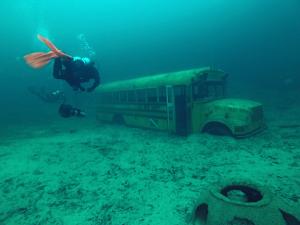
Photo by Carter Warden
Apart from the aerator, the quarry’s deepest attraction, a school bus, was lowered into the quarry in November 2015. It rests at 65ft, a little to the southwest of the aerator. Other submerged artifacts include five platforms, at depths of 5ft, 10ft, 15ft and 20ft; a six-seat, twin-engine Cessna 310; a 1967 US Navy fire truck; a cabin cruiser; a four-person Sea-Doo; a 35ft Gibson houseboat; various statuary; two diamond-shaped swim-throughs; and two fish attractor balls.
Prominent surface features include a small, centrally moored sailboat; an out-of-the-way “goose platform”, tucked into the quarry’s southern corner; and in the parking lot, a couple of picnic tables, a changing room, a pair of pit toilets, and an artificial waterfall.
Aquatic life and diving conditions
In addition to the usual bluegills and zebra mussels, Gray Quarry hosts a small school of paddlefish. Paddlefish are prehistoric-looking, sturgeon-like filter feeders that have distinctive, long snouts. In the 1990s, after the collapse of Russian sturgeon fisheries, paddlefish, which are fished for their roe, were identified as a species of concern. This led to Tennessee’s restriction on the transport of paddlefish across its state line. After repeated, unsuccessful attempts to obtain permits to secure paddlefish from out of state, Bartley and some friends caught some fish from a site below the Cherokee Dam, then drove them 80 miles to Gray, where they were released into the quarry.
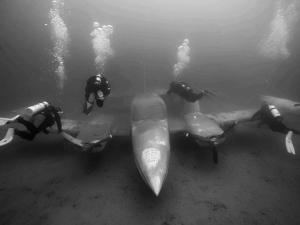
In its four years of operation, Gray Quarry has been dived by locals and visitors from throughout the Southeast and Midwest, and from as far away as California and New York State. It has been dived in wetsuits and drysuits, in single tanks, in backmount and sidemount twinsets, and in backmount and sidemount rebreathers. It has hosted multiple classes, ranging from basic open water to instructor certification. Utilization runs anywhere from a few divers on weekdays to 50 to 70 vehicles in high summer; due to the latter, a reservation system for controlling access at peak times is currently being planned.
Visibility ranges from 20 to 80ft, depending on weather, time of year and runoff. Water temperatures vary from the 40s °F (~7 °C) during winter to the mid-80s °F (~29 °C) in summer. Due to the aerator, temperatures and visibility tend to be nearly uniform throughout. Aeration has also broken down the muck, turning it into a layer of light grayish mud.
In 2019, Bartley reorganized Gray Quarry as a 501(c)(3) nonprofit with a seven-member board of directors. All board members serve for free; none owns an interest in any dive store. Gray’s current operating costs are roughly US$7,000 per year, including insurance, materials, groundskeeping and maintenance. Costs have been kept low, in part, by ample help from merchants who have donated materials at cost and volunteers who have helped with carpentry, painting and cleanup. All profits—the quarry now operates in the black—have gone towards improvements.
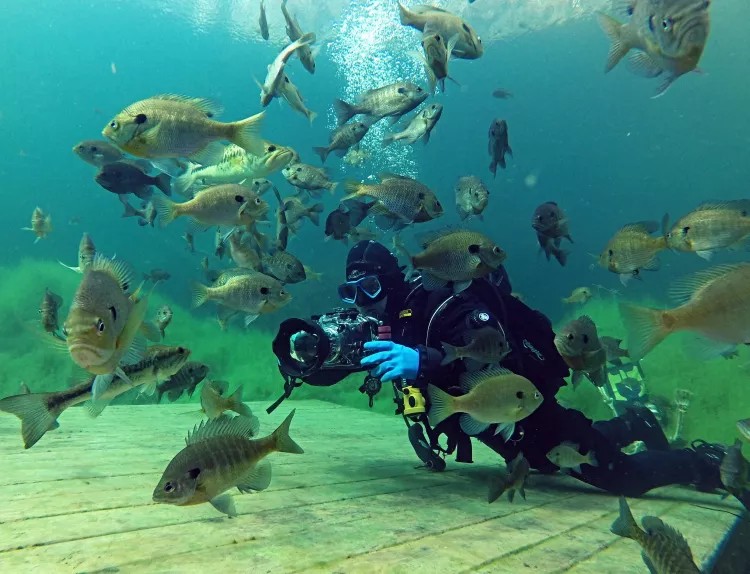
Overall, Bartley estimates that it cost US$100,000 to turn Gray Quarry into a viable dive site. As Bartley sees it, the good that the site has done has justified the cost. As one indicator of this, Burton estimates that 90 percent of his ETSU scuba students now complete their certifications, up from 15 percent in pre-Gray days. Again, in 2020, an estimated 450 students completed open water certifications at Gray, including 15 twelve-year-olds and 10 ten-year-olds.
“It’s pretty cool,” Bartley said, “to have this facility in the mountains of east Tennessee. It was all about the kids.” Or, to quote one of his favorite movies, Field of Dreams: “If you build it, they will come.” For more information, visit: grayquarry.com.
Phil Pfeiffer, Ph.D., is an avid diver and a professor in the Department of Computing at the College of Business and Technology at East Tennessee State University in Johnson City, Tennessee, USA.
REFERENCE:
Bettolli, P. (2015) USGS Cooperative Research Unit: Paddlefish stock assessments drive regulation changes in Tennessee. Outdoor News Bulletin. 69 (5). https://wildlifemanagement.institute/outdoor-news-bulletin/may-2015/paddlefish-stock-assessments-drive-regulation-changes-tennessee (last accessed 8 June 2021)

